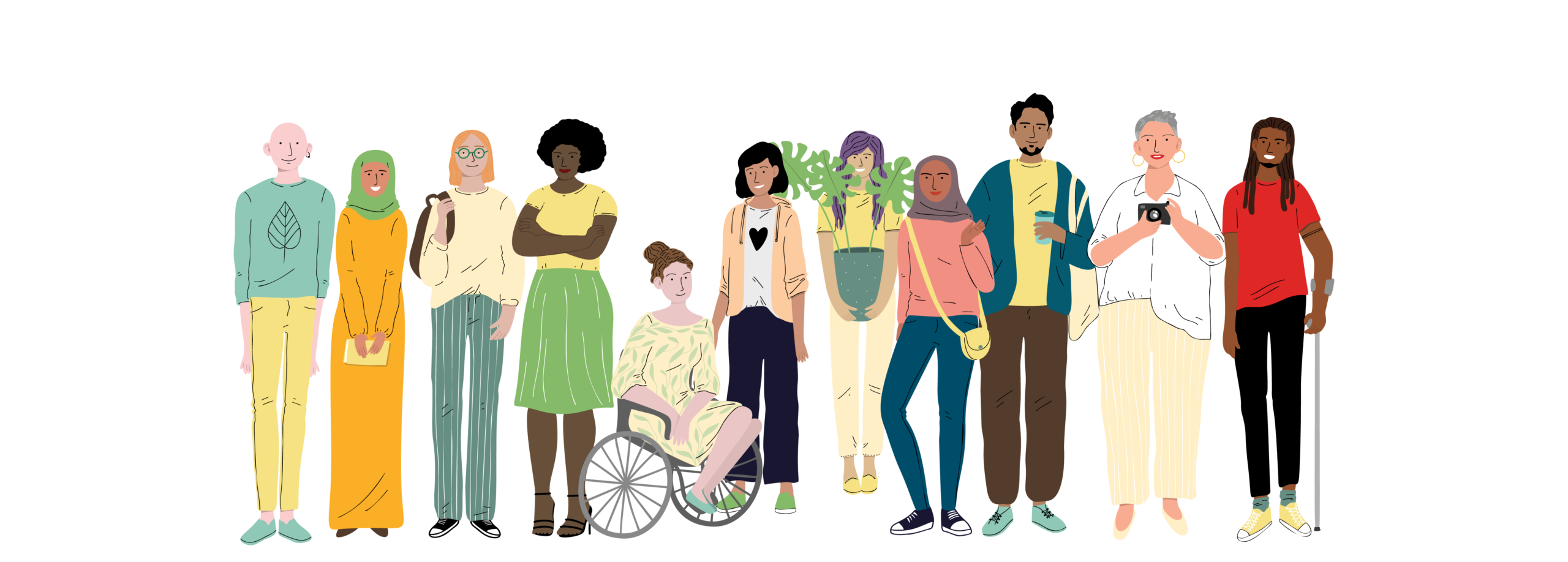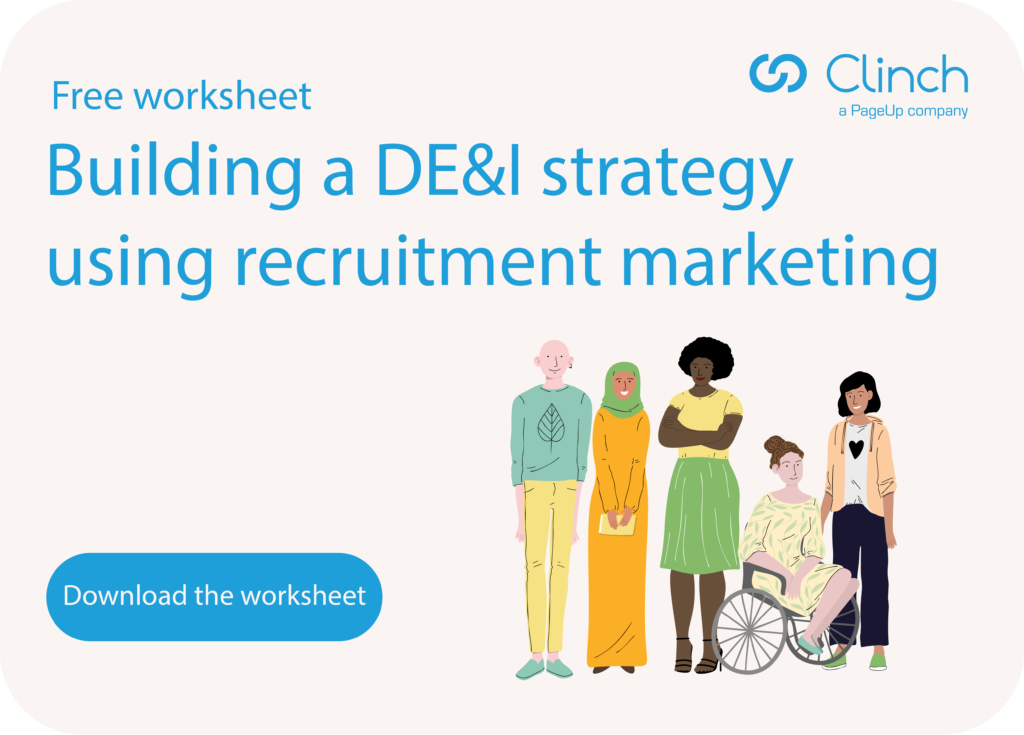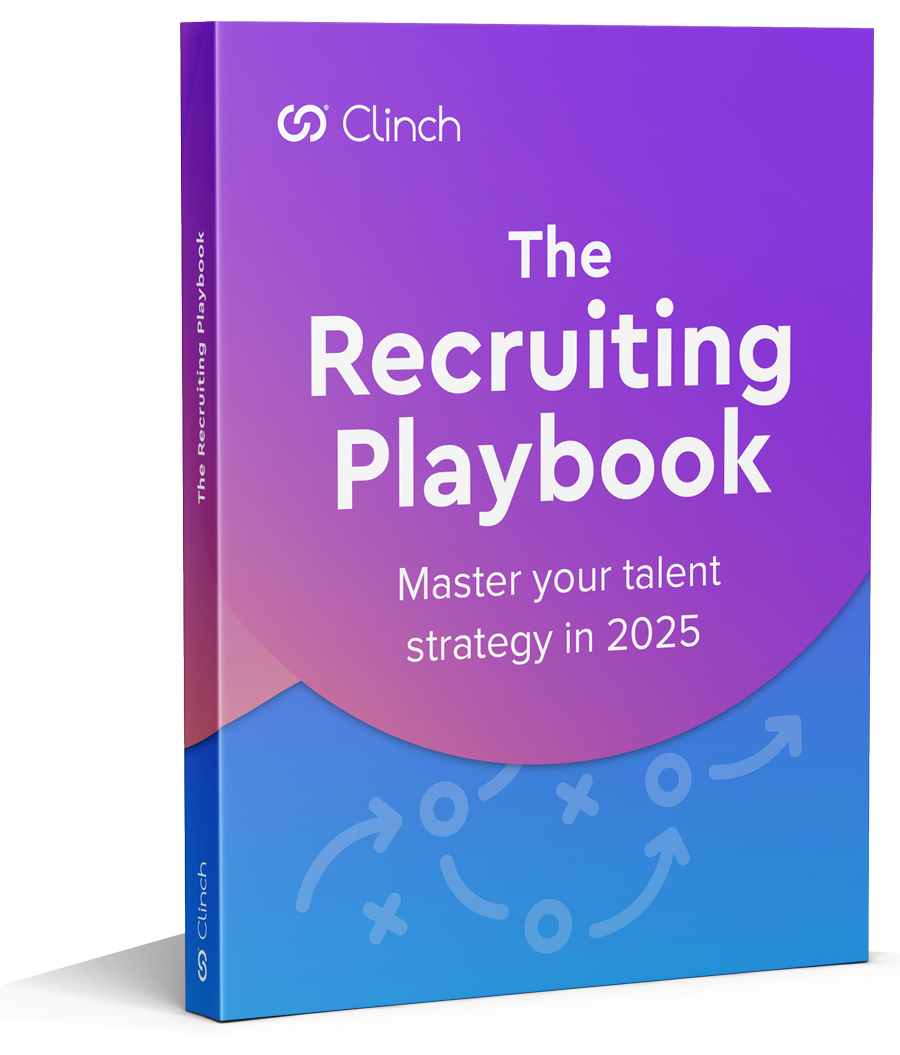Diverse, equitable and inclusive workplaces aren’t created by accident. Selecting and recruiting a diverse workforce begins and ends with a top-down inclusive workplace culture. Under an HR team’s leadership, carefully constructed diversity, equity and inclusion (DE&I) strategies are helping organizations find, engage and hire top talent with diverse backgrounds and experience, as well as develop an environment where everyone feels they belong.
Why is DE&I so important for talent acquisition?
More than just an HR and talent acquisition objective, companies that work towards better diversity and inclusion are creating conditions where creativity, innovation and empathy thrive. Truly diverse and equitable workplaces are achieved through designing processes and an employer brand that is inclusive of all people – regardless of age, gender, race, ethnicity, sexual orientation, education, disability, beliefs and other factors.
The good news: businesses are quickly realizing that building diverse teams creates a recipe for success. Diverse workplaces offer a broader spectrum of perspectives and ideas that bring strength to an organization. The benefits of DE&I are indisputable – and the business case is no less convincing during a global pandemic. According to recent research from McKinsey, companies that double down on their DE&I initiatives now will be better positioned for growth and renewal post-COVID-19.
Some of the qualities that characterize diverse and inclusive companies—notably innovation and resilience—will be much in need as companies recover from the crisis. (McKinsey, 2020)
Watch: Easing diversity hiring pain points with recruitment marketing.
How do you attract a diverse range of candidates to your organization?
There are two sides to building a diverse, equitable and inclusive workforce: The first is designing a fair and inclusive recruitment process. The second is fostering the right internal culture to empower candidates from all backgrounds and walks of life to apply for open roles (and keep them fulfilled in their new role). Talent acquisition will need to take a proactive approach to achieve DE&I objectives. But they can’t do this without first creating an employer brand that speaks to all individuals.
Here are 4 ways to get started on improving your diversity recruiting process:
1. Get business leaders to commit to DE&I initiatives
Talent acquisition teams are uniquely positioned to advise businesses on how to gain a competitive advantage in the labor market. Recruiters should be prepared to articulate a business case and link their strategy to company values. Buy-in from internal stakeholders may be necessary to eliminate barriers that cost the business access to great, diverse candidates.
Pro tip: Involve hiring managers and business leaders in the DE&I program design process so they have buy-in to improve your organization’s diversity outcomes.
Diversity pledges alone won’t change corporate culture. Senior leaders and managers need to use their awareness and emotional intelligence to power positive change. Whether it’s to dismantle barriers for underrepresented employees, hold themselves accountable for elevating new voices, perform regular gap analysis or invest time and energy into championing DE&I at every level – and in their company’s day-to-day operations.
2. Ensure your employer brand celebrates diversity
While DE&I is a responsibility shared by all parts of the organization, HR has a key role to play in laying the foundations for a diverse, equitable and inclusive workplace culture. Equally important is the role talent acquisition has to play in creating and communicating an employer brand and EVP (employer value proposition) that is inclusive of all prospective candidates.
A PwC global diversity and inclusion survey found that over 80% of participants said an employer’s policy on diversity, equality and workforce inclusion is an important factor when deciding whether or not to work for them.
Recruiters are directing their attention towards their career site as a means of attracting talent from different backgrounds and with different perspectives. By refocusing their communications strategy and embedding diversity and inclusion in their messaging, they can encourage all kinds of candidates to hit “apply”.
Some tips to optimize your career site to support your DE&I goals:
|
|
Watch: What does your career site say about your employer brand?
3. Broaden your search to reach diverse talent
With the increasing popularity of job postings via social media sites like Facebook and LinkedIn, why are recruiters struggling to connect with the best candidates? It’s because the labor market is full of information asymmetries (groups of workers have different access to details about open roles). These asymmetries can lead to a monoculture: highly homogeneous teams that lack the ability to challenge and question the status quo. It also sends the message to those who think differently that they are not welcome, which can amount to a serious diversity debt within your organization.
For example, if your selection process skews towards certain recruitment channels, firms or universities, you risk inheriting their biases and “monoculture” as your own, as well as overlooking key channels for diverse talent. Organizations may want to recruit outside of their usual channels, as well as their personal and professional networks.
The secret to diversifying your candidate pool is simple: go where diversity flourishes. If you’re unsure of where to start, consider reverse engineering your recruitment process.
Ask yourself:
- Which recruitment channels and professional networks contain diverse candidate pipelines?
- How do these channels differ for entry-level employees, senior and middle management?
Read: Diversity reporting in a simple “at a glance” interface.
4. Design an inclusive, equitable recruitment process
Designing an equitable recruitment funnel that supports a diverse pool of suitable candidates is an essential step towards achieving true workplace diversity. In a recent interview, LinkedIn’s Head of Diversity, Rosanna Durruthy, shared some important advice for building more diverse talent pipelines.
Talent acquisition should act like a point guard in basketball or an attacking midfielder in soccer, setting up and feeding teammates so they can succeed and, more importantly, so the whole team can succeed.
To make fair and equitable hiring decisions, start by finding and implementing a range of hiring practices. Blanket solutions such as implicit or unconscious bias training are not a silver bullet.
Mitigate selection bias: the dangers of hiring for “culture fit”
Managers hiring in their own image, and the unending pursuit of the “culture fit” – most of us are familiar with the toxic hiring decisions that perpetuate bias and put organizations at a competitive disadvantage. As recruiters, it’s especially important to understand how bias occurs, all the forms it can take and how it can allow us to overlook qualified, diverse applicants. To beat out bias and hire the best people for their organization, hiring managers are deploying AI, psychometrics testing and other digital behavioral or competency-based solutions. These tools help them bring diverse candidates into the mix, as well as filter for the right skills, in a way that’s fair and equitable for a wider range of people.
Stop asking for unnecessary credentials or experience
This type of hiring is especially likely to exclude underrepresented, yet equally qualified candidates. For many roles, skills-based competencies are likely to be far more relevant than a candidate’s credentials, professional connections or educational background.
Think like a marketer to optimize your approach
Use recruitment marketing strategies to leverage your career site and sourcing channel engagement metrics to better understand what’s working and what’s not. If you’re not sure what this means or where to start you can download our free DE&I recruitment marketing worksheet. This worksheet is packed full of ongoing improvement strategies, as well as tips for data collection and analysis (i.e. behavioral attributes, learning and thinking styles).




